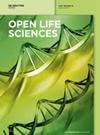Hypomethylation in promoters of PGC-1α involved in exercise-driven skeletal muscular alterations in old age
IF 1.7
4区 生物学
Q3 BIOLOGY
引用次数: 0
Abstract
Exercise training can significantly improve skeletal muscle mitochondrial function and has been proven to be highly relevant to alterations in skeletal muscle DNA methylation. However, it remains unclear whether late-in-life exercise has an effect on promoter methylation of PGC-1α, a key regulator of mitochondrial biogenesis. Here we employed two distinct exercise modalities, constant medium intensity exercise training (CMIT) and high-intensity interval exercise training (HIIT), to investigate their impacts on PGC-1α expression and methylation regulation in skeletal muscle of aged mice. The results revealed a notable decrease in PGC-1α expression in skeletal muscle of aged mice, accompanied by elevated methylation levels of the PGC-1α promoter, and increased DNA methyltransferase (DNMT) protein expressions. However, both forms of exercise training significantly corrected PGC-1α epigenetic changes, increased PGC-1α expression, and ameliorated skeletal muscle reduction. Furthermore, exercise training led to elevated expression of proteins related to mitochondrial biogenesis and energy metabolism in skeletal muscle, improving mitochondrial structure and function. In conclusion, late-in-life exercise improved skeletal muscle function, morphology, and mitochondria biogenesis, which may be associated with hypomethylation in promoters of PGC-1α and increased content of skeletal muscle PGC-1α. Notably, there was no clear difference between HIIT and CMIT in PGC-1α expression and skeletal muscle function.PGC-1α启动子中的低甲基化与运动驱动的老年骨骼肌变化有关
运动训练能明显改善骨骼肌线粒体功能,而且已被证明与骨骼肌DNA甲基化的改变高度相关。然而,目前仍不清楚晚期运动是否会对线粒体生物生成的关键调节因子 PGC-1α 的启动子甲基化产生影响。在这里,我们采用了两种不同的运动模式,即恒定中等强度运动训练(CMIT)和高强度间歇运动训练(HIIT),研究它们对老年小鼠骨骼肌中 PGC-1α 表达和甲基化调控的影响。结果发现,老年小鼠骨骼肌中的PGC-1α表达明显下降,同时PGC-1α启动子的甲基化水平升高,DNA甲基转移酶(DNMT)蛋白表达增加。然而,两种形式的运动训练都能明显纠正 PGC-1α 的表观遗传变化,增加 PGC-1α 的表达,并改善骨骼肌的减少。此外,运动训练还能提高骨骼肌中与线粒体生物生成和能量代谢相关的蛋白质的表达,改善线粒体的结构和功能。总之,晚年锻炼改善了骨骼肌功能、形态和线粒体的生物生成,这可能与PGC-1α启动子的低甲基化和骨骼肌PGC-1α含量的增加有关。值得注意的是,HIIT 和 CMIT 在 PGC-1α 表达和骨骼肌功能方面没有明显差异。
本文章由计算机程序翻译,如有差异,请以英文原文为准。
求助全文
约1分钟内获得全文
求助全文
来源期刊

Open Life Sciences
BIOLOGY-
CiteScore
2.50
自引率
4.50%
发文量
131
审稿时长
43 weeks
期刊介绍:
Open Life Sciences (previously Central European Journal of Biology) is a fast growing peer-reviewed journal, devoted to scholarly research in all areas of life sciences, such as molecular biology, plant science, biotechnology, cell biology, biochemistry, biophysics, microbiology and virology, ecology, differentiation and development, genetics and many others. Open Life Sciences assures top quality of published data through critical peer review and editorial involvement throughout the whole publication process. Thanks to the Open Access model of publishing, it also offers unrestricted access to published articles for all users.
 求助内容:
求助内容: 应助结果提醒方式:
应助结果提醒方式:


